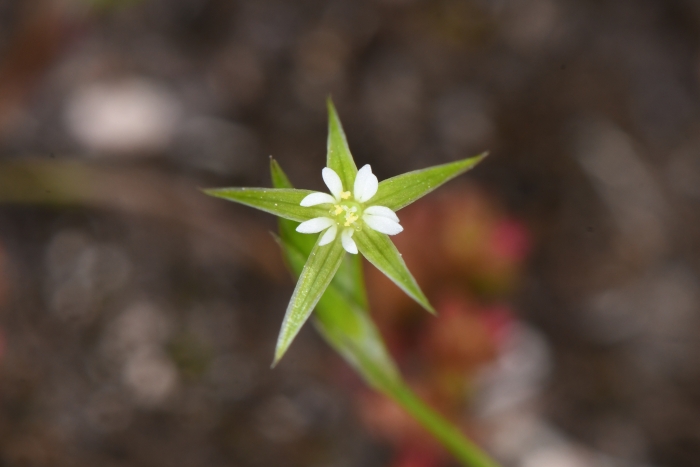Shiny Chickweed
(Stellaria nitens)
Shiny Chickweed (Stellaria nitens)
/
/

© Chloe and Trevor Van Loon
CC BY 4.0
Image By:
© Chloe and Trevor Van Loon
Recorded By:
Copyright:
CC BY 4.0
Copyright Notice:
Photo by: © Chloe and Trevor Van Loon | License Type: CC BY 4.0 | License URL: http://creativecommons.org/licenses/by/4.0/ | Uploader: chloe_and_trevor | Publisher: iNaturalist |

























Estimated Native Range
Summary
Stellaria nitens, commonly known as shiny chickweed or shining starwort, is an annual herb native to a variety of habitats in western North America, including British Columbia, Alberta, the western United States, and extending into Baja California. It is often found in open woodlands, meadows, and along streambanks, as well as in disturbed areas such as roadsides and cultivated fields. This plant typically grows to about 10 inches tall with a slender, upright, four-angled stem. The leaves are concentrated toward the base of the stem, up to 1 inch long, hairless except for some rough hairs along the margins, and are notable for their shiny surfaces. The inflorescence consists of a few flowers on short pedicels, each with five pointed sepals and sometimes five tiny white petals, which are not always present but when they are, they add a subtle charm to the plant during its flowering season in spring and early summer.
Shiny chickweed is valued for its low maintenance and adaptability to a range of conditions, from dry to moist soils. It is often used in wildflower gardens, native plant landscapes, and for restoration projects due to its ability to thrive in various environments. It prefers full sun to partial shade and can tolerate a range of soil types, provided they have good drainage. While not particularly known for any serious diseases or pests, it can become weedy if allowed to self-seed prolifically.CC BY-SA 4.0
Shiny chickweed is valued for its low maintenance and adaptability to a range of conditions, from dry to moist soils. It is often used in wildflower gardens, native plant landscapes, and for restoration projects due to its ability to thrive in various environments. It prefers full sun to partial shade and can tolerate a range of soil types, provided they have good drainage. While not particularly known for any serious diseases or pests, it can become weedy if allowed to self-seed prolifically.CC BY-SA 4.0
Plant Description
- Plant Type: Herb
- Height: 1.5-2 feet
- Width: 0.5-1 feet
- Growth Rate: Rapid
- Flower Color: White
- Flowering Season: Spring, Winter
- Leaf Retention:
Growth Requirements
- Sun: Part Shade, Full Shade
- Water: Medium
- Drainage: Fast, Medium, Slow
Common Uses
Border Plant, Low Maintenance, Rock Garden
Natural Habitat
Native to open woodlands, meadows, streambanks, and disturbed areas
Other Names
Common Names: Shining starwort, Shiny Starwort, Shining Chickweed, Shiny Stitchwort
Scientific Names: , Stellaria nitens, Alsine nitens, Stellaria graminea subsp. brevifolia, Stellaria moenchioides, Stellaria moenchioides, Stellaria praecox, Stellaria stricta,
GBIF Accepted Name: